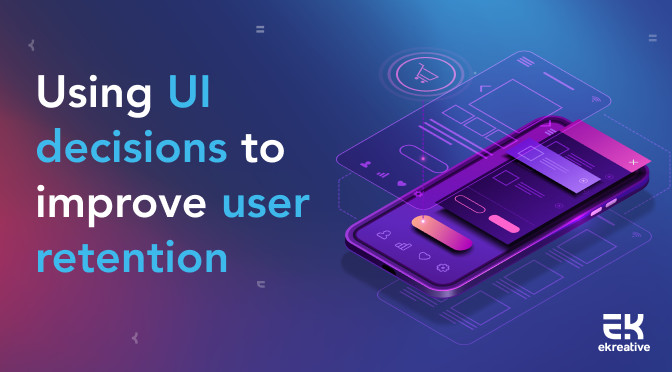
Turning Your App Into A Habit For Users
Posted on August 5th, 2020
This guest-post is courtesy of our partners at Tapadoo.

App developers and marketers are striving to penetrate the foreign markets and countries with the highest number of potential customers for their products. There is a rush to reach out to as many customers as possible globally and this has made the competition even fiercer. If you’re pitching your app to foreign customers, you need to attune the app to the needs and behavior of the local audience. Along with the language, other aspects such as the app’s name, keywords, color, symbols, currency and time-zone will be simultaneously localized. This is where the role of app localization comes into play. Another reason being that more than [50%](https://dzone.com/articles/the-only-app-localization-tutorial-you-will-ever-n) of the people across the world prefer to download or buy apps from websites in their own language. Moreover, only 15% of people worldwide use English as their first or second language, making app localization all the more necessary. While expanding your app for the international audience, avoid these 5 common yet serious app localization mistakes. **#1. You haven’t thought about localization while developing the app** When developing your app, it must be flexible enough to adjust and adapt to different languages, cultures and regions if global penetration is the end goal. This makes it easier to roll out the app in multiple versions. Ideally, your app should be flexible to be customized for multiple local markets as well. For instance, different languages take up different kerning space. While developing the app, take into consideration the physical space a particular language would take up. Your app should be flexible enough to accommodate multi-language internationalization. Taking the example of “How are you” in English, which is made up of three words. The same in Chinese is “你好吗” and in Spanish is “Como Estas.” To leave room for the app to be translated into multiple languages, separate the text from the code and let the developers’ use Unicode strings. **#2. Failing to translate the app’s name** Regardless of how interesting or unique the name sounds in English, if it displays a negative sentiment in another country, your app will receive backlash. Choose a name which is easy to pronounce, remember and recognize. [Optimize the description for the app store](http://www.gummicube.com/2018/02/getting-the-most-from-your-app-store-description/) by incorporating the right keywords to gain visibility in a foreign app market. When Nokia launched the Lumia in Spanish markets, the product name meant “prostitute” in Spanish. The product launch was a failure, as a result of which the brand received negative publicity. On the flip side, many brands have changed their names to a different local name with the same meaning, while entering a new market. To name a few examples, Coca-Cola, Burger King, KFC, Lays, Budweiser and many others have changed their brand names while entering a new market. <Image src="https://res.cloudinary.com/gummicube/image/upload/v1708646155/upload/community/2165573533.png" alt="Picture1" width="247" height="247" /> <Image src="https://res.cloudinary.com/gummicube/image/upload/v1708646155/upload/community/1055728887.png" alt="Picture2" width="391" height="219" /> [Source](https://www.fastcompany.com/3055388/these-brands-go-by-different-names-in-different-countries-and-its-jus) One reason to consider using a [professional human translator](https://www.translatebyhumans.com/) instead of a machine translator is the human understands the context of the text and the name being translated. While a machine gives a literal translation, the professional translator thinks about: * The thought which first comes to mind when you hear and see the name * Does the name have an underlying negative connotation? * Does the name resemble a similar local word? The professional translator does the necessary research to come up with a name appropriate to the local market. **#3. Missing out the cultural aspect** A majority of localization projects fail because they do not take into consideration the cultural aspect while presenting the app to the local audience. Culture influences the communication and thereby any population in the following three ways: 1. Firstly, the cognitive concerns have a great influence on the cultural framework of a country. For example, in the USA, independence and individuality underlie its cultural foundation. In the South East Asian countries, family plays a vital role in the person’s upbringing. People believe in depending on their families and being there for each other. 2. Secondly, the idea of what should be considered an appropriate behavior varies from one culture to another. For example, in some geographies such as Africa and South East Asia, the blunt expression of all thoughts and ideas is not considered appropriate. Meanwhile, in the western countries, there is nothing wrong with being bold to express thoughts, ideas and beliefs. 3. Finally, it is difficult to undermine the influence that emotions have on the culture of a country. While gestures or crude language can be used to convey ideas or explain thoughts in some cultures, it can be considered highly offensive to others. For example, the use of peace signs in the USA is considered fine. However, in the UK the use of a backward peace sign will be outright offensive. In-depth research on the local culture and practices of the country you are planning to localize your app for will allow you to create a unique identity without disregarding the local sentiments. **#4. Using the same logo for different languages** From the average 3,000-20,000 brand messages and advertisements we are exposed to every day, we notice and remember a mere 12! What are the chances that your app will be among those 12? This makes it ever so vital for your logo to create an impact on your audience. Your app logo has to be compelling and easy to remember. The same icons will not have the very same appeal in all markets, and that’s because different regions have different understandings of symbols and colors. For example, when Coca-Cola entered the Chinese market, their brand name did not mean anything in the local language. So, they chose a close-sounding equivalent of ‘Coca-Cola,’ i.e., ‘Kekou Kele,’ meaning “let your mouth rejoice” in the local language. <Image src="https://res.cloudinary.com/gummicube/image/upload/v1708646155/upload/community/2992569760.png" alt="3" width="637" height="499" /> Create a local identity using icons, names and images that maintain your brand’s distinctive features and are culturally appropriate. **#5. A frustrating user experience** Remember, your potential app users won’t flock to download instantly. You will have to design your app in a way that it caters to user expectations and solves their needs. While Japan, Australia, USA, UK and China have the largest number of iPhone users, the Android penetration is the greatest in India, Russia, Indonesia and Brazil. Instagram launched their Android app in the US one and half years after releasing their iOS app. At that time they had nearly 30 million iOS users. Had it been in a country with a greater number of Android users, their strategy would’ve been different. If you look at Apple’s US and UK website, you’ll see that they’ve adjusted the date and time to be localized. Doing so causes no disruptions for users as they see the website in a format that is familiar to them. <Image src="https://res.cloudinary.com/gummicube/image/upload/v1708646155/upload/community/1147538580.png" alt="4" width="974" height="464" /> If you look at Apple’s India and US website, they have adjusted the names on the homepage to be localized. Doing so causes no disruptions for users as they see the website in a format that is familiar to them. [<Image src="https://res.cloudinary.com/gummicube/image/upload/v1708646155/upload/community/2894907419.png" alt="5" width="804" height="939" />](https://community.gummicube.com/wp-content/uploads/5.png) Source – [Apple’s India website](https://www.apple.com/in/iphone/) [<Image src="https://res.cloudinary.com/gummicube/image/upload/v1708646155/upload/community/2554019812.png" alt="6" width="529" height="937" />](https://community.gummicube.com/wp-content/uploads/6.png) Source – [Apple’s US website](https://www.apple.com/iphone/) Your app should provide an optimal user experience for the users of the region you are targeting. For example, if your app provides purchase options, make sure that they can be done in local currency. The price of the products should be converted to that region’s local currency for the convenience of the users. **Conclusion** **–** Keeping yourself updated on the latest trends in the international markets will help you effectively implement your app localization strategy. Please leave your thoughts in the comment box below and let me know if you know about any other mistakes. *** <Image src="https://res.cloudinary.com/gummicube/image/upload/v1708646155/upload/community/972875875.png" alt="Alpi Mantry" width="396" height="396" />About the author – [Alpi Mantry](https://www.linkedin.com/in/alpimantry/) is the VP of growth and relationship at [Translate By Humans](https://www.translatebyhumans.com/). With her 10-years of experience at Oracle, Deloitte and Infosys, she now helps Translate By Humans cater to global brands such as Vogue, Nike, HSBC Europe, Amazon and many more.

This guest-post is courtesy of our partners at Tapadoo.

This guest-post is courtesy of our partners at Performante.

This guest-post is courtesy of our partners at eKreative.